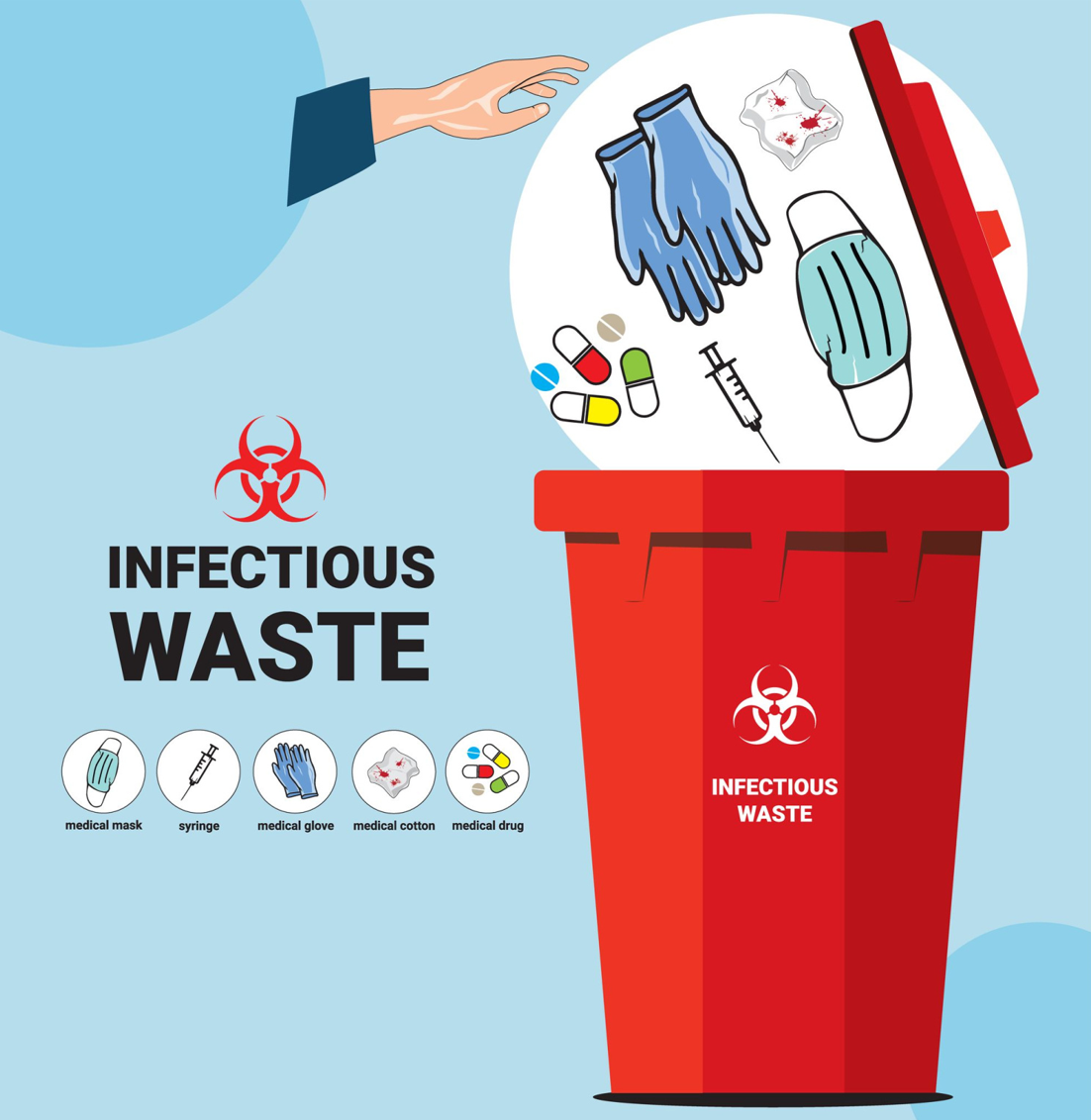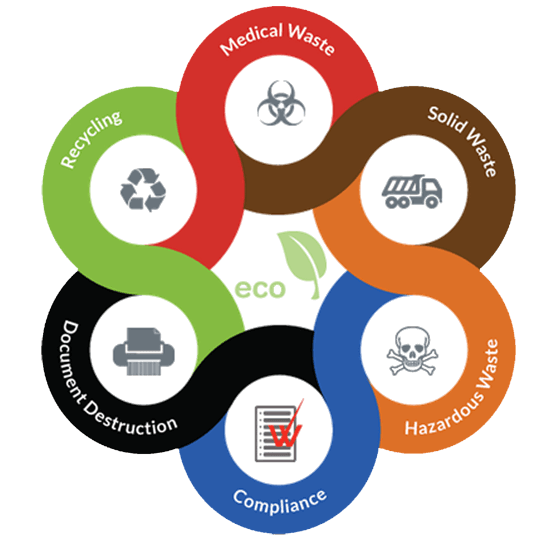Safe and Reliable Medical Waste Removal: Your Trusted Environmental Partner
Wiki Article
Conformity and Laws for Medical Garbage Disposal
Conformity and laws for medical waste disposal play a crucial duty in making sure the safety and security and health of both medical care specialists and the public. Proper management of medical waste is vital to protect against the spread of infections, safeguard the atmosphere, and keep public health. This calls for adherence to details guidelines and procedures stated by regulative agencies and bodies. These guidelines include numerous aspects, including the category and segregation of medical waste, appropriate storage and handling treatments, in addition to transportation and disposal approaches. By following these guidelines, medical care centers can decrease the risk of contamination and prospective damage to people and the atmosphere. This post will certainly discover the value of conformity and offer an introduction of the essential laws controling medical garbage disposal.Significance of Conformity
The importance of compliance with regulations for medical waste disposal can not be overemphasized. Correct disposal of clinical waste is vital for guaranteeing the safety and security and well-being of medical care workers, people, and the public. Clinical waste, which includes things such as made use of needles, polluted gloves, and biomedical waste, can present severe health threats otherwise dealt with and disposed of effectively.Conformity with laws makes sure that medical waste is handled in a manner that reduces the possibility for direct exposure to dangerous substances and transmittable diseases - medical waste disposal. It assists stop the spread of infections, such as HIV, liver disease B and C, and other bloodborne pathogens. Compliance likewise plays a crucial duty in shielding the environment by protecting against contamination of water sources, dirt, and air
Failing to abide by guidelines can result in severe consequences for health care facilities, consisting of fines, legal activity, and damages to their online reputation. In addition, non-compliance may endanger the health and wellness and safety and security of healthcare workers, people, and the area.
Conformity with regulations for medical garbage disposal calls for adherence to specific standards and methods. These may include appropriate segregation, packaging, labeling, and storage of medical waste. It additionally entails utilizing approved disposal methods, such as autoclaving, incineration, or landfilling, depending on the kind of waste.
Regulative Agencies and Bodies
Governing agencies and bodies play an important function in looking after compliance with laws for clinical waste disposal. These companies are responsible for setting methods, guidelines, and criteria to ensure the proper and risk-free handling of clinical waste. They check and apply compliance to protect public health and wellness and the setting.One of one of the most prominent regulative companies in the United States is the Environmental Security Agency (EPA) The EPA is in charge of regulating the storage, transportation, treatment, and disposal of clinical waste. They establish guidelines for waste generators, transporters, and treatment facilities to adhere to, making sure that all necessary precautions are taken to prevent the spread of diseases and contamination.
An additional vital governing body is the Occupational Safety and Wellness Management (OSHA) OSHA establishes regulations and standards to protect employees from job-related dangers, including those relevant to medical waste. WasteX Medical Waste Disposal. They provide standards for the risk-free handling and disposal of medical waste to shield workers in medical care facilities
Along with these government firms, private states additionally have their own governing bodies that supervise clinical garbage disposal. These agencies may have their very own specific guidelines and needs that should be adhered to.

Category and Segregation of Clinical Waste
To guarantee appropriate monitoring of medical waste, it is important to classify and segregate it according to established standards and methods. medical waste removal service. Category and segregation play a vital duty in reducing the danger of infection, shielding the setting, and guaranteeing the security of health care employees and the publicMedical waste is classified right into different groups based upon its potential threat level. These categories consist of infectious waste, pathological waste, sharps waste, pharmaceutical waste, chemical waste, and radioactive waste. Each classification calls for specific handling, transportation, disposal, and storage space approaches to minimize the danger of exposure and contamination.
Segregation of medical waste involves separating various kinds of waste at the resource. This procedure makes sure that waste with various danger levels is not combined, decreasing the potential for cross-contamination and making disposal procedures extra reliable. Correct partition is accomplished with making use of color-coded labels and containers, which help health care workers and waste management employees recognize and manage each type of waste appropriately.
Along with classification and partition, medical care facilities must additionally follow local, state, and government laws regarding clinical waste administration. These regulations detail details needs for storage, transport, therapy, and final disposal of clinical waste, guaranteeing conformity and preserving public health and safety and security.
Appropriate Storage Space and Managing Procedures
Appropriate storage and handling treatments play an essential function in guaranteeing the certified and safe management of clinical waste. Clinical waste, which includes things such as utilized syringes, contaminated handwear covers, and ended medications, can posture severe health and ecological dangers otherwise managed correctly. Therefore, it is critical for health care centers and other generators of clinical waste to apply strict storage space and handling protocols.
To begin with, clinical waste must be stored in resilient, watertight containers that are specifically created for this objective. These containers should be identified with the global biohazard symbol and the words "clinical waste" to plainly indicate the components. In addition, the containers ought to be maintained firmly near prevent any potential leak or splilling.
Additionally, it is vital to set apart various kinds of medical waste to avoid cross-contamination. Sharps, such as needles and scalpels, need to be stored in puncture-resistant containers to lessen the danger of injuries - WasteX Medical Waste Disposal. Chemical waste, such as solvents and anti-bacterials, must be kept independently from various other kinds of medical waste to avoid chain reactions or unsafe direct exposures

Transport and Disposal Methods
Health care facilities must ensure see here now the risk-free transportation and proper disposal of their medical waste to abide by guidelines and safeguard public health. Transportation and disposal techniques play an important role in stopping the spread of contagious diseases and decreasing the environmental impact of clinical waste.
To carry medical waste, health care centers must use puncture-resistant and leak-proof containers that are identified with the biohazard symbol. These containers must be securely secured to stop any kind of leakage throughout transportation. Furthermore, medical care facilities need to establish procedures for the transport process, consisting of making use of specialized vehicles and experienced personnel.
When the clinical waste gets to the disposal facility, it goes through numerous methods of treatment. One usual approach is incineration, which involves burning the waste at high temperature levels to destroy virus and lower the volume of waste. One more approach is autoclaving, which uses steam and pressure to disinfect the waste. After therapy, the waste is normally sent to a garbage dump or a waste-to-energy center for last disposal.
It is vital for health care facilities to work with certified and permitted waste management companies to ensure correct transport and disposal of clinical waste. These firms have the competence and resources to deal with medical waste safely and in conformity with guidelines.
Conclusion
To conclude, compliance with laws for clinical waste disposal is of utmost importance to ensure public wellness and safety and security. Regulatory agencies and bodies play an important role in enforcing these laws. Appropriate classification and partition of medical waste, as well as adhering to proper storage and taking care of procedures, are vital to protect against contamination and the spread of conditions. Adequate transportation and disposal approaches should be executed to lessen ecological influences. Generally, adherence to compliance and regulations is needed to effectively take care of clinical waste.Clinical waste, which includes products such as made use of needles, contaminated handwear covers, and biomedical waste, can pose severe wellness risks if not managed and disposed of properly.
These classifications consist of infectious waste, pathological waste, sharps waste, pharmaceutical waste, chemical waste, and radioactive waste.Partition of clinical waste involves dividing different types of waste at the resource. Correct partition is attained through the use of color-coded containers and tags, which help health care employees and waste monitoring personnel determine and take care of each type of waste correctly.
Chemical waste, such as anti-bacterials and solvents, should be kept separately from various other kinds of medical waste to avoid chemical reactions or harmful exposures.
Report this wiki page